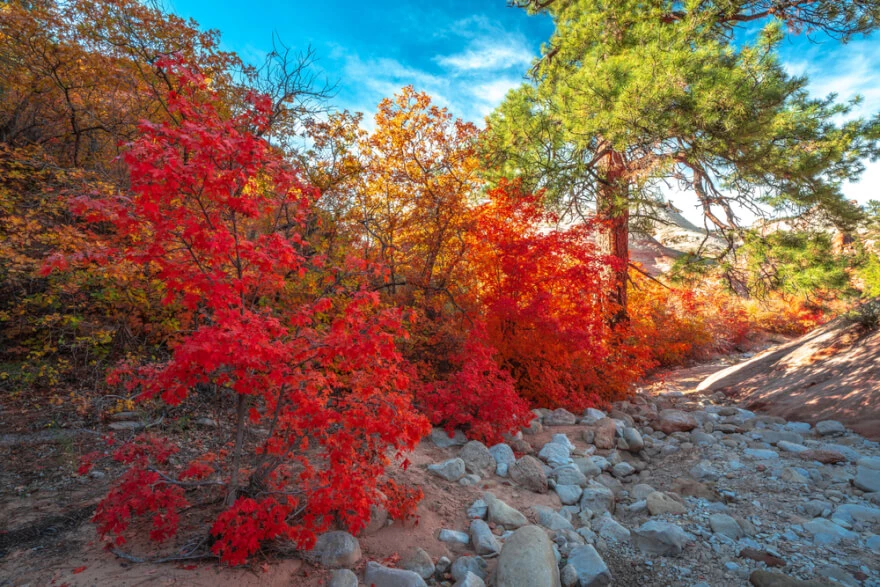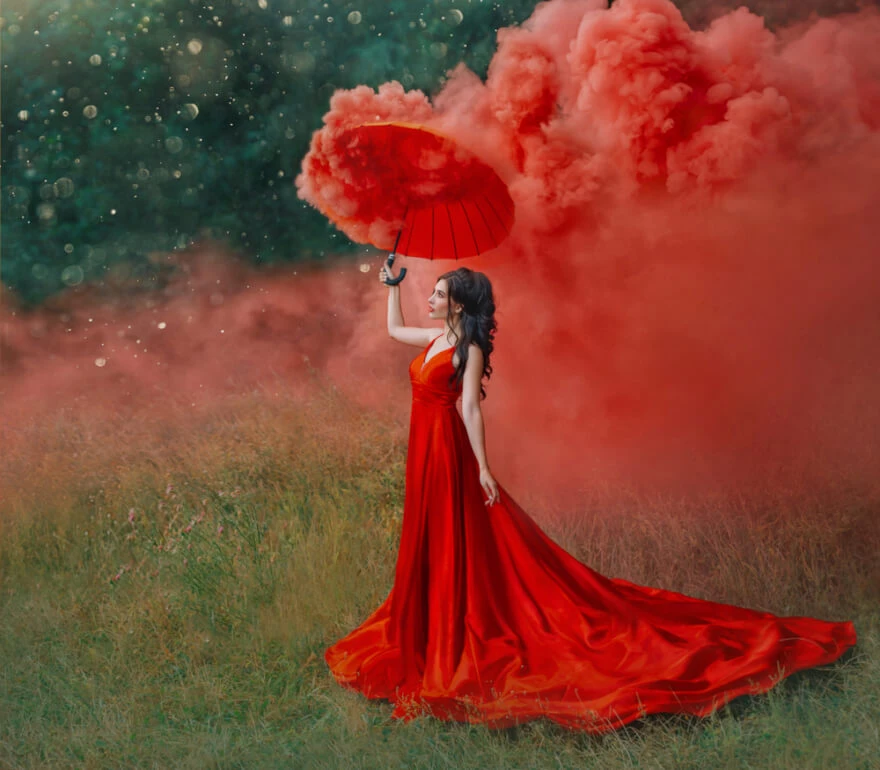10 Landscape Photography Tips and Techniques

- 1. The rule of ‘golden hour’
- 2. Use the best tripod you can afford
- 3. Composition importance in perspective shot
- 4. The right place and a good wide-angle lens
- 5. RAW format is always the best choice
- 6. Always imagine what you want to be creative
- 7. Checking white balance
- 8. Shooting at minimum aperture — chance to increase the depth
- 9. Shoot with minimum ISO
- 10. Using filters
We will never stop surprising ourselves with our planet and its secrets. There is no better way to remember the perfect moment, but making shots with your camera. Sometimes smartphones can become a new small digital helper with a full gallery, reminding those sweet life instants. But only a true search for a great view can bring travelers to the most faraway places on Earth. It is absolutely amazing, how unique our nature is, and how strong is our desire to ‘capture’ it. Thanks to some landscape photography tips, there is a chance to memorize an exceptional moment. This is one of the most popular genres, and many authors are trying to make it awesome and exciting. This article will guide you through several techniques to improve results and share adorable beauty of nature.
1. The rule of ‘golden hour’
Get your best shots with the help of natural effects
There is no secret of a great number of reasons why the picture can be bad or good. But it is important to mention in this article that the quality of a countryside snapshot is often determined by a key factor — lighting. Of course, there are many elements, like weather conditions and frame quality. But only soft afternoon light, bright sunrises or exciting sunset colors can emphasize the picture idea. It is not always possible to capture a special ‘glow’ of heaven and earth, golden or evening-twilight, but if you succeed, the result is always overwhelming.
2. Use the best tripod you can afford

Good tripod is the one to guarantee your jackpot
Going for a walk with your digital friend, remember that every moment can become memorable. And a great scene view is impossible without a stable tripod. That is why, it is better to buy the best tripod that you can afford. When shooting in a ‘gold hour’ or in the sunset mode (no less spectacular ‘blue hour’ at dusk, when the brightness of the sky is still sufficient to get a satisfactory exposure), you will probably need a tripod. It is impossible to achieve optimum sharpness and stability of the frame, working in nature, without it. Use tripods when taking long exposures, creating panoramas and video. There is a great choice for every taste. If there is no way to get a tripod at all, it's worth trying to create at least something similar.
3. Composition importance in perspective shot

Use your imagination and create the story
Let us admit that nowadays it is not so easy to impress the viewer. Everyone can get some stunning images online or even try to make them. When it comes to something new and fresh, get your mind focused on a composition, which is a key to a good result in panoramic pictures. If you do not know where to begin, start from fundamental steps. Remember simple advice and try not to exaggerate with sophisticated and complex ideas. Sometimes it is too difficult to get the plot from an overloaded photo. You need to think about foreground and background. Try to create harmony between them, which always attracts and retains attention of every viewer.
4. The right place and a good wide-angle lens

Wide angles are always in fashion, but more for lens
When shooting nature, it is very important to calculate each possible possibility. Find out exactly where the sun rises in the morning, how shadows move at different times of the day. Set how daylight correlates with features of this place and position your camera in such a way to correctly include all elements. Note that early in the morning and late at night, shadows are effectively lengthened — it will be an interesting effect in the final result.
Wide-angle lens can capture even more, because it usually includes in the scene a variety of details. It can easily create a unique perspective that brings the viewer closer, makes each image more realistic.
5. RAW format is always the best choice

Make it RAW and get it original
The result will be definitely better if you use RAW mode and it is significant for landscape photography tips and techniques. After setting up the camera, you can get frames containing much more information than the standard JPEG. RAW files are easier to process by increasing or decreasing exposure, changing colors using software (for example, Adobe Camera Raw) without sacrificing quality. There are many other advantages, which are not available for files originally saved in JPEG.
6. Always imagine what you want to be creative

Practice with your style and invent a new mode
Before installing the camera on the ‘scene’, imagine the result in your mind. Make some testing pictures from your hands, in order to clearly visualize the picture, move forward, kneel down to understand how it looks from different points. This, in addition, will help correctly and accurately adjust camera settings. Continue working until you finally make sure that the composition is well-balanced from front and back plans, and optimal camera settings are selected. After that, you can install a tripod - to work with a long exposure.
7. Checking white balance

Double checks are never to be underestimated
Before starting, make sure that camera settings are correct, and if you are in doubt, use auto mode. Also, remember that when shooting in RAW-format, you can set the white balance during post-processing. You should keep in mind that cameras are not so complicated to guess the right color of objects, that is why balancing the setting will be a must for every image. Though modern models are professional enough to do it by itself, it is never late to check it during editing.
8. Shooting at minimum aperture — chance to increase the depth

Depth is a new old trend
The higher the aperture the less important the element you will include. It is good enough for some kind of snapshots, but willing to create a more realistic view, get lower and you will see the difference. To add more effects to your pictures, make sure that the whole large image is in focus. This can be achieved by setting the aperture value to F/8 or F/16. The depth, in this case, will be at maximum level. Pay attention to this small, but important trick.
9. Shoot with minimum ISO

ISO setting is an outstanding part of your work
Giving photography tips, landscape is admired for its possibility to ‘scenery’ and change your settings slowly according to the situation. Fixing ISO at minimum is a way to achieve greater image clarity, avoiding digital noise. Also, at low ISO, you can extend the shutter speed range. Though the level of ISO is absolutely various for every author and each place, you can just play with it and choose the option you like most of all. You are the only one to decide on a final result.
10. Using filters

Do not be afraid of trying varieties of filters
Most professionals preparing their working backpack with equipment usually have several filters. Among the most popular are such as ND-varieties and so on. Sometimes their choice determines the result even more than the lens itself. There are many ways to use filters, but in our case two important characteristics are crucial:
- ability to remove reflections and unpleasant glare, increase the intensity of colors, saturation and contrast — this effect is clearly visible, for example, when shooting a clear blue sky;
- ability to use long exposures: neutral filters reduce the amount of light that falls on a lens, and therefore, increase the exposure time — as a result you will get surreal clouds, water similar to milk and other spectacular details, while editing.
Any advice is important and has great value when you are ready to travel and look for the best views. So keep in mind the best tips for landscape photography and do not forget about editing features and particularities.
Co-founder of RetouchMe. In addition to business, he is passionate about travel photography and videography. His photos can be viewed on Instagram (over 1 million followers), and his films can be found on his YouTube channel.
Moreover, his profile is featured on the most popular and authoritative resource in the film industry — IMDb. He has received 51 international awards and 18 nominations at film festivals worldwide.

with RetouchMe














